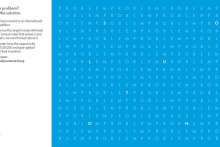Since 2005, the James Dyson Award has challenged entrepreneurial undergraduates and recent graduates of engineering and design, to ‘Design something that solves a problem’. Purposely broad and open-ended, the brief tasks students to take on big global problems. Past winners have found solutions to plastic recycling accessibility, excessive blood loss from knife wounds, and improving at-home medical diagnostics. Sir James Dyson chooses the competition’s global winners; they receive vital funding and high-profile recognition – key first steps to take their ideas into real life practical application.
What is in it for you?
The James Dyson Award is your chance to make a name for yourself as an inventor. As well as winning a significant cash prize, you could generate media exposure to kick-start your career, earn the esteem of your peers – and perhaps gain the confidence to launch your own business. Entering is simple.
Apply before 6 July 2022 via an online form via the James Dyson Award website.
Explain concisely what your invention is, how it works, and your development process. The best entries solve a real problem, are clearly explained, show iterative development, provide evidence of physical prototyping and have supporting imagery and a video. All judges will consider the limitations on prototyping and product development due to the Covid-19 pandemic.
the prices
- The international winners, chosen by Sir James Dyson, receive up to £30,000
- The international runners-up receive £5,000
- Each national winner receives £5,000
What is a good invention?
The best inventions are often the simplest, providing clear and intelligent solutions to real world problems. Last year's international sustainability winner was Plastic Scanner, invented by Dutch student Jerry de Vos. The portable Plastic Scanner tells you on the spot what kind of plastic a product is made of. Infrared light is used to detect the plastic components. This makes it easier to separate the plastic.
Eligibility criteria
Entrants must be, or have been within the last four years, enrolled for at least one semester in an undergraduate or graduate engineering/design related course. This course must be at a university in a country or region chosen to participate in the James Dyson Award.
In the case of team entries, all members must be or have been within the last four years, enrolled for at least one semester in an undergraduate or graduate programme at a university in a country or region chosen to participate in the James Dyson Award. At least one team member must have studied an eligible subject in engineering or design. Those participating in a degree level apprenticeship at Level 6 or Level 7, and those who have completed said apprenticeship in the past four years, are eligible to enter the award.
Further FAQs can be found on the James Dyson Award website.






